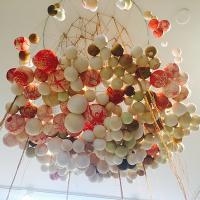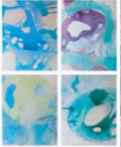|
|
|
|
|
 회원정보 회원정보 |
|
 닉네임 닉네임 |
|
|
 가입일 가입일 |
2008-07-23 |
|
 등급 등급 |
운영자 (1) |
|
 활동 활동 |
| 포인트 : 0 점 |
| 게시물 작성수 : 0 개 |
| 댓글 작성수 : 개 |
|
|
 |
|
|
|
|
|
|
|
|
 USA 전시소식 USA 전시소식 |
|
|
|
| Re:visioning HANJI Feb.2~Mar.31 |
|
| 작성자: NYCulture |
조회: 16237 등록일: 2016-03-01 |
|
|
|
|
|
|
|
|
|
|
|
|
|
|
|
| 번호 |
|
| 276 |
|
|
| 275 |
|
|
| 274 |
|
|
| 273 |
|
|
| 272 |
|
|
| 271 |
|
|
| 270 |
|
|
| 269 |
|
|
| 268 |
|
|
| 공지 |
|
|
| 266 |
|
|
| 265 |
|
|
| 264 |
|
|
| 263 |
|
|
| 262 |
|
|
| 261 |
|
|
| 260 |
|
|
| 259 |
|
|
| 258 |
|
|
| 257 |
|
|
| 256 |
|
|
| 255 |
|
|
| 254 |
 |
|
신진, 중견, 원로 작가 6인의 ‘자연으로부터, From Nature’ 전시
|
|
신진, 중견, 원로 작가 6인의 ‘자연으로부터, From Nature’ 전시✤ 기간: 2017년 8월 4일(금) - 8월 31일(목)✤ 개막행사: 2017년 8월 4일(금) 오후 6시~8시✤ 참여작가: 김부강, 성유림, 이향연, 정현, 조정우, 최수일✤ 장소: 워싱턴 한국문화원워싱턴 한국문화원(원장 박명순)은 오는 8월 4일부터 8월 31일까지 ‘자연으로부터 (From Nature)’ 란 주제로 전시회를 개최한다. 이번 전시에는 자연을 주제로 김부강, 성유림, ..
|
|
|
|
| 253 |
|
|
| 252 |
|
|
| 251 |
|
|
| 250 |
|
|
| 249 |
|
|
| 248 |
 |
|
Simplicity, NokMee Association's Group Exhibition Opening on Oct.2, 6-8pm
|
| ElgaWimmer |
17892 |
2014-09-24 |
|
Elga Wimmer-Hyun Contemporary,
526 West 26th Street, Suite310, New
York, NY 10001, hyuncontemporary@gmail.com,
201.724.7077 / 212.206.0006
For Immediate
Release:Elga Wimmer –Hyun Contemporary presents the
16th NokMee, The Ewha Women’s University alumni Association’s
annual Group Exhibition,
Simplicity:
Jeannie Choe,
Hyo-Chong Yoo, Sun-Young Won Lee, Sunghae Kim, ..
|
|
|
|
| 247 |
|
|
|
 회원정보 회원정보 |
|
 닉네임 닉네임 |
NYCulture (_admin_) |
|
 가입일 가입일 |
2008-07-23 |
|
 등급 등급 |
운영자 (1) |
|
 활동 활동 |
| 포인트 : 0 점 |
| 게시물 작성수 : 0 개 |
| 댓글 작성수 : 개 |
|
|
 |
|
|











